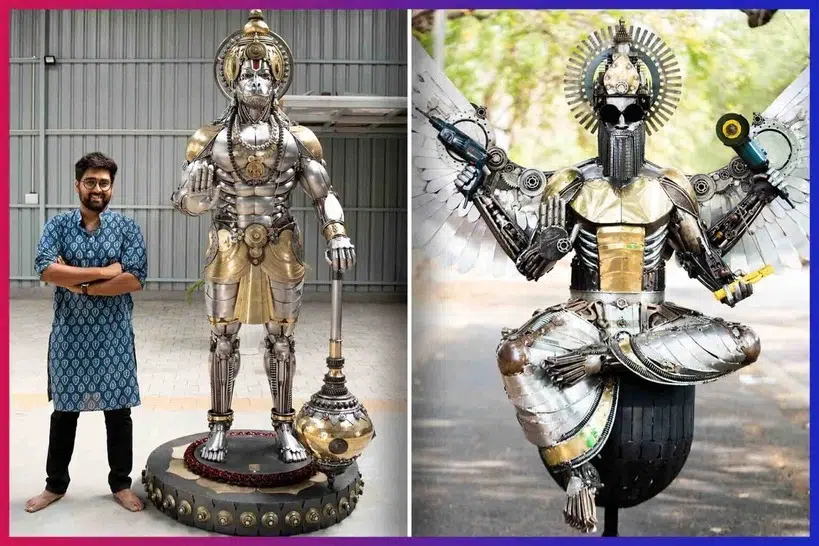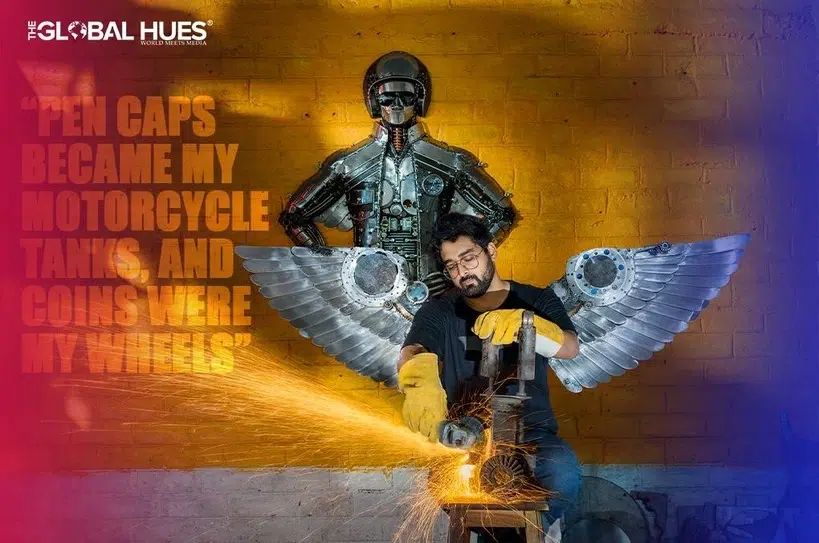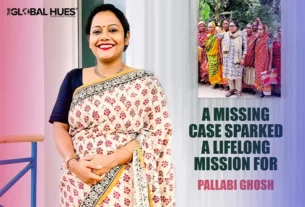When people try to create something, they usually use traditional mediums like crayons, colours, watercolours, clay or other craft items. Very rarely do we see people making beautiful sculptures out of scrap metal. However, Deval Verma breaks this mould as we see him crafting stunning sculptures from discarded metal pieces found around the house like pen clips, bangles, old coins, screws, and more.
Following the completion of his mechanical engineering degree, Deval went on to pursue post-graduation in product design at MIT Pune. It was only after he created his first artwork and received a huge response from the market that he decided to pursue a career in art.
Let’s hear from the creator Deval Verma, about what inspired him to turn metal into art, the process of creating the artwork, challenges and future aspirations.
1. What sparked your interest in turning scrap metal into art, and how has this passion evolved over the years?
Since my childhood, I have been fascinated with the beauty and potential of discarded materials. Along with that, I was fascinated by the idea of transforming waste into something meaningful and visually striking. As a kid, I would make tiny motorcycles out of the junk in my home. Pen caps looked like motorcycle tanks to me and coins used to be my wheels. Mechanical engineering helped me hone my skills when I learnt metal welding and metal fabrication. Later my post graduation in product design helped me to refine my work.
With each passing year, my passion for working with scarp metal increased as I honed my skills continuously, experimented with new techniques, and kept exploring different themes and concepts in my artwork.
2. What lies in the process of creating artwork from scrap metal? Walk us through the creative process.

The process begins with scavenging for interesting pieces of scrap metal and for that, I would explore junkyards and industrial areas. Once I collect all the materials I need, I take time to conceptualise and sketch out ideas for the artwork. Then comes the painstaking process of cutting, welding, shaping, and refining the metal to bring my idea to life. Each piece I create is a labour of love and requires patience, creativity and technical skill.
3. Can you share a particularly memorable or challenging piece of artwork you’ve created from scrap metal? What was the story behind it?
For me, crafting the sculpture of Hanumanji from scrap metal was both memorable and challenging. To create the perfect sculpture, I needed to find the right parts, which was a task in itself, followed by designing and getting the proportions right. Furthermore, I had to create meticulous detailing to ensure the scrap didn’t look like junk. The most challenging part was sculpting Hanumanji’s face and capturing his divine qualities with precision. Despite all the hurdles I faced, it was a rewarding homage to the revered deity by blending my artistry with spirituality.
4. Looking to the future, what are your hopes and aspirations for your career as an artist?
Being an artist, I hope to continue pushing the boundaries of what I can achieve with scrap metal as a medium both artistically and conceptually. I aspire to showcase my work on a huge scale globally. Moreover, I wish that my art sparks conversations about sustainability, craftsmanship, and the transformative power of art.
5. Can you share any upcoming projects or collaborations that you’re particularly excited about?
I am currently working on creating a Natraj sculpture using discarded materials. It is a project that combines my passion for art and commitment to sustainability, as I help breathe new life into reclaimed materials. Additionally, I am excited about working on several large-scale public installations that will showcase the beauty and potential of scrap metal as a medium for artistic expression. These projects allow me to engage with communities and inspire dialogue about the transformative power of art and the necessity of environmental guardianship.




